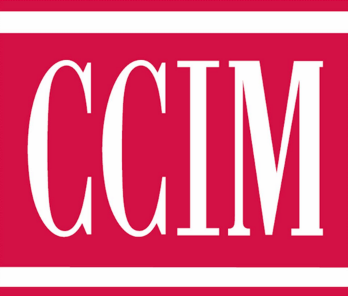Office Romance
Private equity longs for trophy properties while smaller investors keep their options open.
by Alan L. Pontius and Yitzie Sommer; Jennifer Norbut; and Jason Siler, CCIM
At the national level, private equity investors are entering the office market at an unprecedented pace, escalating competition and pricing for premium assets in major and secondary cities. Other factors, such as interest rates, corporate relocations, and population shifts, are driving office activity in suburban and small markets.
Although it continues to attract investors, how long can the sector's strong performance last? This outlook includes perspectives from national industry experts and local commercial real estate professionals on factors influencing the current office market.
Out-of-area investors continue to seek strong performing class A office portfolios, such as the three-building Gateway complex in central Phoenix, which sold to Los Angeles-based Transwestern Investment Co. for $96 million in July.
Private Equity Power
by Alan L. Pontius and Yitzie Sommer
The Blackstone Group's $39 billion acquisition of Equity Office Properties Trust was the defining moment of private equity's foray into the commercial real estate office market. The transaction represents the largest real estate buyout as well as one of the largest corporate buyouts in U.S. history. In addition, the deal has spawned billions of additional dollars through the trading and re-trading of the portfolio's properties.
But more than anything, this one transaction highlights private equity's significant influence on the office sector. Not limited to the capital markets, private equity's effect extends deep into office's operational side and will greatly influence the sector's direction in the next 12 months.
How Did We Get Here?
As recently as 2004, private equity funds were minor players in the office sector, accounting for just 10 percent of all office acquisitions by dollar volume. Bigger players included individual private buyers, institutional investors, foreign investors, and real estate investment trusts; only syndicators and owner-users held smaller market shares. The promise of higher returns began attracting private equity to real estate in 2005, but in 2006 the funds moved from acquiring individual assets and mid-size portfolios to acquiring whole companies and publicly traded REITs.
Before the Equity Office purchase, Blackstone spent nearly $13 billion to acquire Carr America Realty and Trizec Properties in 2006. On a smaller scale, Morgan Stanley Real Estate Funds acquired Glenborough Realty for just under $2 billion and LBA Realty Funds purchased Bedford Property Investors for $800 million. While together these transactions are less than half of the Equity Office deal, they paved the way for future buyouts.
By 2006, office occupancy was increasing along the East and West Coasts as corporate profits fueled a substantial demand for space in top-tier markets. Simultaneously, low interest rates and the abundance of capital in the market drove prices on prime trophy assets along the coasts to record highs. With these conditions private equity funds could purchase portfolios and companies with heavy leverage, pare certain assets at a profit, and hold onto properties with long-term growth potential. REITs were unable to employ this strategy due to their dividend obligations and tendency to utilize less leverage on their deals. While private equity investors can finance a minimum of 70 percent of their acquisitions and even up to 90 percent on company buyouts, REITs usually finance no more than 55 percent of transactions.
The REIT Direction
Although REITs have increased their office purchases over the last few years, their share of the total market — and therefore their influence on the market — has decreased. REITs represented 16 percent of all U.S. office properties acquired in 2004 but so far this year they represent just 10 percent of the market. Even this number over-represents their influence on the broader market as 25 percent of all REIT investments during the last 12 months were made byVornado Realty Trust and SL Green, almost exclusively in the New York City market.
While traditionally REITs have concentrated on one geographic area, they have acquired properties relatively evenly across all three sectors. Conversely, private equity funds have cast a wider geographic net in their acquisitions, but they almost exclusively purchase class A properties.
This strategy has created a slight disconnect in pricing movements among the classes in the last two years. Class B properties witnessed stronger price growth and capitalization rate depreciation between 2001 and 2004, but since then classA prices have surged and are growing at a rate well beyond class B prices. During the last 30 months, the average price per square foot for class A space has increased 53 percent compared to a 30 percent increase for class B space psf. While class B growth is extremely impressive, it falls far short of class A growth where private equity dominates the market.
In just the last 18 months average class A prices psf increased by 30 percent — double the increase in class B prices psf. This trend will continue through the remainder of the year and into 2008 as private equity concentrates its efforts on class Aassets and foreign and institutional competitors — tired of losing out on transactions — compete more intensely for these assets.
Lower Yields Draw Buyers
Although the initial Equity Office sale and the resale of its smaller regional portfolios have flooded the market with class A assets, the market is not oversupplied. The bidding wars and low yields accepted on these portfolios illustrate that private equity buyers still are active in the market and willing to except low yields to acquire premier assets.
The acceptance of lower yields is dramatically affecting commercial real estate operations. To justify the inflated prices being paid for office assets, newly minted owners are increasing rents 10 percent to 25 percent. Private equity funds with deep pockets can tolerate months of vacancy in exchange for top tenants willing to pay higher rental rates. On the other hand, REITs, with quarterly earnings announcements and dividend requirements, are not in a position to wait for the perfect tenant and are not able to push up rents as significantly, especially on renewals.
The effect of these rental rate increases varies by market. A 10 percent to 20 percent rent increase in a single building may affect the overall rental rate within a small radius but not the entire submarket. Through a series of acquisitions, however, several private equity funds such as Blackstone, Morgan Stanley, Beacon Capital Partners, and Broadway Real Estate Partners have amassed huge square footage concentrations in various markets. Their drive to dramatically increase rents is starting to have a more widespread impact. For example, Boston, Seattle, Los Angeles, and San Francisco, which have seen huge acquisitions by private equity funds, are experiencing some of the sharpest rental increases.
Noticeably, markets with little or no private equity penetration have seen slower rent growth. Class A rents in Charlotte, N.C., have increased just 3.3 percent in the last 18 months, even though the central business district had the lowest U.S. CBD vacancy rate for 2007's first two quarters. Atlanta, which drastically reduced class A vacancy in the last year, has recorded rent growth of only 2.5 percent during the period. Private equity has bypassed these markets — as well as most inland U.S. metro areas — bifurcating rental rate increases by geography.
While initial returns offered among inland markets are superior to coastal markets, private equity funds are betting that through extreme rent hikes and fast-growing appreciation, their meager initial returns in the coastal areas quickly will grow, allowing them to exit the properties in two years to three years with enormous profits. Until this scenario is attainable in the inland markets, private equity will continue to focus on cities such as Seattle, Los Angeles, San Francisco, Boston, Washington, D.C., and New York.
If competition for coastal assets heats up and cap rates fall, pinching already razor-thin margins, private equity funds may look elsewhere to achieve returns. Second-tier choices may include Dallas, Houston, Denver, and Chicago.
New Competitors
Recent closings suggest that other buyer segments are catching up to private equity and reasserting some prominence in the market.
International investors, particularly from the Middle East, are increasingly competitive in bidding for trophy assets in gateway cities, primarily Manhattan, and have beaten out private equity on several listings. Earlier this year, Africa-Israel Investments acquired the New York Times Building in Times Square for $525 million. That transaction and the 3Q07 announcement that two Israeli investment companies, Tao Tsuot and Financial Levers, will acquire the Philip Johnson-designed Lipstick Building for $649 million illustrate that foreign buyers are flexing their muscles to outbid private equity funds.
With continued depreciation of the U.S. dollar against foreign currencies, international investors are likely to increase their real estate purchases through 2007 and outbid private equity funds on many deals. Major destination cities such as New York, Washington, D.C., and Los Angeles are obvious targets, but acquisitions also could spread to Seattle, Boston, Dallas, and Miami.
The growing competition will not end private equity's investment in the office sector, but it does forecast an even more competitive environment for office transactions during the next 12 months. The competition will focus on class A properties initially, but with such a high percentage of top properties already having changed hands in the last 36 months, competition could move to high-end class B assets in major coastal markets and certain inland locations such as Chicago, Dallas, and Houston.
From an operational standpoint, the increased competition for assets and high prices paid will perpetuate the drastic rent increases being forced on the market. Rental growth, driven by top-tier market spikes, could surpass last year's phenomenal 9 percent rate. The price paid for this growth, however, may be some short-term vacancy. But with limited quality space available in major markets and high construction costs restricting new development, tenants may be forced to pay.
Will It Last?
Private equity's impact on the office sector is profound, but whether it will endure is still a matter of debate. Many experts suggest that the real estate capital flowing into private equity will continue unabated, providing ample opportunity for these funds to continue their buying spree and to swallow additional REITs.
As job creation and corporate profits remain in a growth mode, albeit at a slower rate, the demand for space will remain strong and reward owners with strong tenants at strong rents. During the last 18 months, private equity dominated the office investment sector, but with rising interest rates, a cheap dollar, and more competition, the party is going to be crowded by a host of outside players. This might change the party's dynamics but it won't end the fun.
What's Driving Local Markets?
by Jennifer Norbut
Office properties are a top draw in today's marketplace, but the factors that influence this sector's activity vary widely. Local nuances, such as increasing population and corporate relocations, combined with economic factors such as low interest rates, are creating unique office market scenarios across the country.
People on the Move
Population shifts are building office demand in many markets. Southern and western states continue to be the biggest draw: The Sun Belt region's population will increase 42.9 percent by 2030, according to the U.S. Census Bureau. Some markets already are experiencing more activity based on the growing population.
"Tucson just hit the magic 1 million population mark and a lot of firms now are looking at the market solely because of this factor," says Mark C. Irvin, CCIM, SIOR, managing member of Mark Irvin Commercial Real Estate Services in Tucson, Ariz. As a result, Tucson is on corporate radar screens, he says.
An influx of new residents, which spurred a five-year new-home construction boom, also is fueling South Florida's office market, says Neil E. Merin, CCIM, SIOR, chairman of NAI/Merin Hunter Codman, in West Palm Beach, Fla. Despite rising office rents, housing-related service providers, such as residential lenders, continue to absorb office space in the high-growth region.
Further west, areas such as Fort Worth, Texas, also appeal to major corporations looking for new markets to call home. Dallas-Fort Worth and the surrounding suburbs, known as the Metroplex, currently boast 6 million people and are expected to grow to 10 million within the next 20 years. The active market recently lured Comerica Bank away from Detroit and prompted Fidelity Investments to add a $200 million, 600,000-square-foot addition to its local office campus, according to Stephen H. Fithian, CCIM, president and broker of Sperry Van Ness Advisors in Fort Worth.
ServiceMaster and International Paper recently relocated their national headquarters to Memphis, Tenn., boosting the market's leasing activity, says Kelly H. Truitt, CCIM, president of CB Richard Ellis in Memphis. The transactions have helped the market achieve equilibrium after recent financial mergers displaced two large corporations' national headquarters and support services from the area.
Class B: Reposition and Refocus
Lack of quality product continues to be a hurdle in midsize and small markets. To counter this, developers are rehabbing B and C class properties, opening the door for tenants and buyers priced out of larger markets. For example, in South Florida, "Landlords are refurbishing and adding amenities to buildings that were bought cheaply in the 1990s and have had little to no capital invested in them since," Merin says.
In Dallas-Fort Worth, capital continues to concentrate on class A product and push up prices, thereby increasing the appeal of lower-quality buildings. "Class B and C product are affected much more by the property's underlying fundamentals than by capital sources," says Scott A. Morse, CCIM, executive vice president of Colliers International in Dallas. "We'll continue to see further interest in class B product as class A property prices continue to climb."
In San Diego, "A-quality space does not justify its price premium when compared to well-maintained, logistically superior, and ultimately much cheaper B-quality space," says Jason Siler, CCIM, a commercial real estate analyst with CapmarkFinance in San Diego. With vacancy rates averaging 11.5 percent and amenities such as ocean views and easy freeway access, class B space now is starting to attract investors, Siler says.
Developers in Omaha, Neb., are devoting money to new class A product in suburban markets, contributing to "a steady overhang of about 1 million square feet of 1970s-style buildings with poor parking ratios and lack of modern wiring and infrastructure," says James W. Maenner, CCIM, SIOR, vice president of CB Richard Ellis/Mega in Omaha. However, since there is ample up-to-date and reasonably priced space in the market, "these buildings are probably destined for other uses rather than repositioning [as office space]," he says.
Cheap Capital for Unusual Deals
The continued low interest rates are enabling transactions that wouldn't be feasible in more traditional economic conditions, sparking creativity among office owners in markets such as Omaha. Large companies there are buying or building properties that contain more square footage than they need and leasing out the extra space to local tenants. "These companies are difficult competitors because the ownership incentives and goals are different in those buildings vs. for-lease buildings," Maenner says.
Joseph Larkin, CCIM, SIOR, president of Larkin Commercial Properties in Albany, N.Y., says readily available financing and open space is a deal-making combination in his market. "There is land available for development and on an after-tax net present cost, owning is typically less expensive than leasing," he says. Opportunities to serve local clients who wish to buy rather than lease also remain plentiful in Tucson, Miami, and Dallas-Fort Worth, according to office experts in these markets.
Low-Rise Construction Demands
While building costs are up nationwide, construction continues in most markets. Though class A product is going up in most top-tier cities, some suburban and secondary markets are seeing increased demand for low-rise, garden-style properties. "Multiple developers have built one- and two-story office buildings in high-income areas to cater to new businesses and successful professionals," Fithian says. Referred to as "merchant builders," these developers are constructing and leasing up properties to market to eager 1031 buyers.
Demand for garden-style offices is high in Tucson as well. "Both new construction and net absorption are at all-time highs, and developers are building what the market wants," Irvin says.
Location-Specific Challenges
Local market conditions including the weather have a noticeable effect on office activity in cities such as Tampa, Fla. As a result of 2004 and 2005's active hurricane seasons, "skyrocketing insurance rates have posed a challenge in finding qualified buyers who can attain reasonably priced insurance and close transactions," says Dale Peterson, CCIM, senior vice president of CB Richard Ellis in Tampa. "Brokers overcome this by seeking buyers with affordable windstorm insurance at a portfolio level or having buyers outsource management and leasing to a national brokerage company that has capacity under its national insurance portfolio."
In many regions of the country, market-specific factors continue to be the greatest influence on office activity. Although many areas face obstacles that commercial real estate professionals can't control, such as lack of land and high construction costs, some locations remain relatively insulated from dramatic market swings. "In Omaha, we don't really boom, but we don't really bust either. We just have good, steady growth," Maenner says.
Sector to Watch: Medical Office
by Jason Siler, CCIM
Adding value to office assets usually is achieved through improved leasing practices on ailing buildings. While owners and managers only can raise rents as the market achieves them, some are seeking tenants whose market rent per square foot exceeds that of the typical office tenant. Repurposing a building into medical office is a top strategy in markets with strong medical demand, such as Florida and Southern California.
As of second-quarter 2007, medical tenants occupied only 4.2 percent of leased office space nationwide, according toCoStar Group. However, U.S. healthcare spending totaled nearly $2 trillion in 2005, or $6,697 per person, a figure that is expected to more than double by 2016, according to the Centers for Medicare and Medicaid Services. In addition, healthcare services are expected to be the fastest-growing office-using employer between 2004 and 2014, according to a recent National Association of Realtors study. (See sidebar, "Finding Tomorrow's Tenants.") With more than 1.9 million office-using healthcare jobs expected to come online in the next decade, high concentrations of medical office and a rapidly rising population may be a winning combination.
These changing market dynamics will increase demand for medical office space, presenting new opportunities for commercial real estate professionals. Repositioning office space for medical use can be expensive in the short term; however, the long-term value benefits can be substantial.
Retrofitting these buildings can run about $80 per square foot to $100 psf and strong management is key as physicians tend to have more maintenance issues due to patient traffic. In addition, higher parking ratios are a difficult hurdle to overcome. Depending on the jurisdiction, medical office parking ratios can be between four to five spaces per 1,000 square feet.
With significant barriers to entry, medical office repositioning projects are geared toward sophisticated investors with a solid management staff as well as an understanding of the demand for this space in a particular market. A building approved and re-zoned as medical office can provide an immediate pop in value similar to that of an approved condominium map for an apartment building. The rental premium created can provide a strong hedge against lagging office rental rates and high market vacancy, since medical practitioners tend to stay put.





